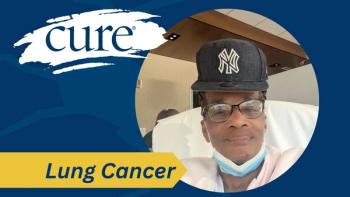
When A Child is in Treatment for Cancer, Their Caregivers Become A Vital Resource
A pediatric oncology nurse offers advice for parents or primary caregivers on how to support their child during cancer treatment.
It’s hard to imagine a worse situation than when a child has been diagnosed with cancer and unless it is experienced first-hand, it is impossible to know the feelings the child’s parents/primary caregivers must grapple with. Confronting a child’s mortality is something no parent should ever have to face. It is a tragedy of epic proportions. In that moment, life is forever changed for the entire family. Based on my experiences as a pediatric oncology nurse, a sense of powerlessness is commonly expressed by parents.
As part of cancer care for children, it is necessary to have unpleasant or painful procedures performed on them. When a child is approached to have a painful procedure done, often they will do all they can to defend themselves, which commonly results in the child screaming, kicking or biting those who are performing the procedure. Alternatively, the child may withdraw in fear and terror.
No matter the reaction, there is a potential outcome of emotional trauma. For a child, anxiety and fear can be perceived in the same way physical pain is experienced, as evidenced when a child begins crying out in pain before the procedure has started. Parents of the child have a powerful opportunity to advocate for their child and affect the way these procedures are carried out. There is potential for the child’s anxiety and fears to be lessened when specific tools are implemented, and the child is given adequate preparation for the procedure.
Here are some ways parents can cope with their sense of loss of control and help to empower their child:
1. If there is an expectation that the upcoming procedure will be painful, your child should be assured that everything possible is being done to minimize the pain, and that their family will be nearby. When explaining a procedure, use age-appropriate language and keep answers honest and simple. If the child wants to know more, they will ask additional questions.
2. Comfort positioning is invaluable. This approach involves a secure physical contact between the child and primary caregiver that is established before a potentially painful procedure, thereby limiting the child’s mobility, increasing a sense of control and promoting relaxation.
3. Numbing cream and cold sprays can also be used to decrease the pain of needlesticks.
4. Incorporating a Child Life team is invaluable when implementing comfort positioning and distraction techniques. If there is no Child Life team available, family members can surround the child, distracting them with toys, songs or stories. Children can generally only focus on one thing at a time, so helping them to focus on something other than the procedure can be very useful.
5. Offer your child choices to help them establish a sense of control. For example, ask an older child if they would prefer to watch the procedure or to look away. A younger child will likely appreciate being asked where they would like to sit during the procedure.
6. Ask the hospital staff if it is possible for your child to sit up rather than lie flat during the procedure. This simple act can allow for a significant increase in the child’s sense of control.
7. The concept of time is hard for a child to conceptualize. During the procedure, avoid using references such as “we’re almost done,” or “just one more minute.” Continue to reassure your child that you are there, you love them and will hug them when the procedure is done.
8. If there are other children in the family, remember they will be affected as well. It may be useful to bring them to the clinic on a day when things are likely to be less intense so they can see where their parents are going with their brother or sister. This is helpful in alleviating fantasies that you are somewhere having fun without them.
9. It’s very important to remember that the hospital you are involved with will have guidelines regarding when parents can be present with their child during procedures. These guidelines must be adhered to as they are developed for your child’s safety.
Despite implementing all of these tactics, it is likely your child may continue to resist and struggle to some degree. However, implementing these measures of education, distraction and comfort have the potential to aid in an improved experience, a decreased level of anxiety and a lowered perception of pain by the child. The goal is to lessen these feelings, not to eliminate them completely. Most pediatric health care professionals are aware of these techniques.
Parents can be their child’s advocate by working with their child’s team to impact the success of this approach. By helping your child to cope with medical procedures and minimize a fear of nurses, doctors and hospitals, the child will benefit in the long run when it is time to return to the hospital for further treatment. Your involvement in this effort must be guided by your own comfort level. Professional help to manage feelings at this difficult time can be very useful for both the child and the family as you navigate through this crisis.
Finally, give yourself the credit you deserve for the courage it takes to be there for your child and don’t forget to breathe. I can endorse that parents are the real-life heroes for their children in this impossible situation.
For more news on cancer updates, research and education, don’t forget to




